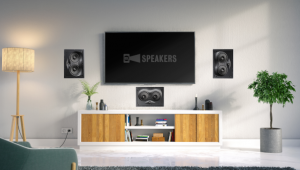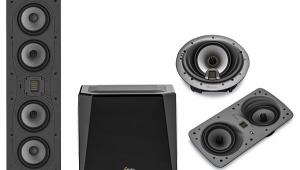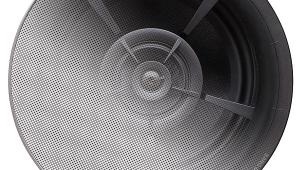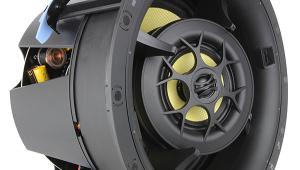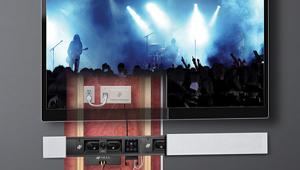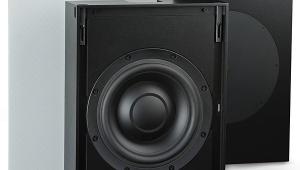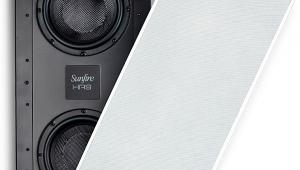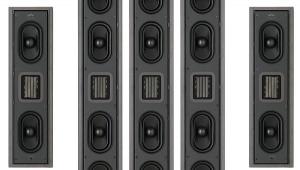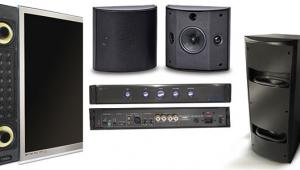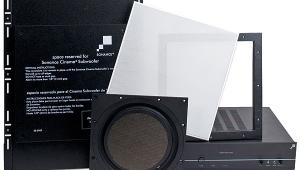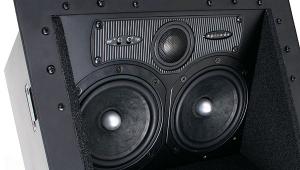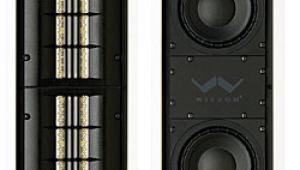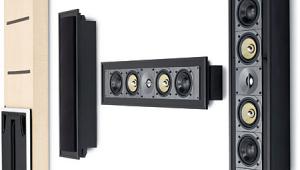Stealth Acoustics B30G Subwoofer and 255R Subwoofer Amp
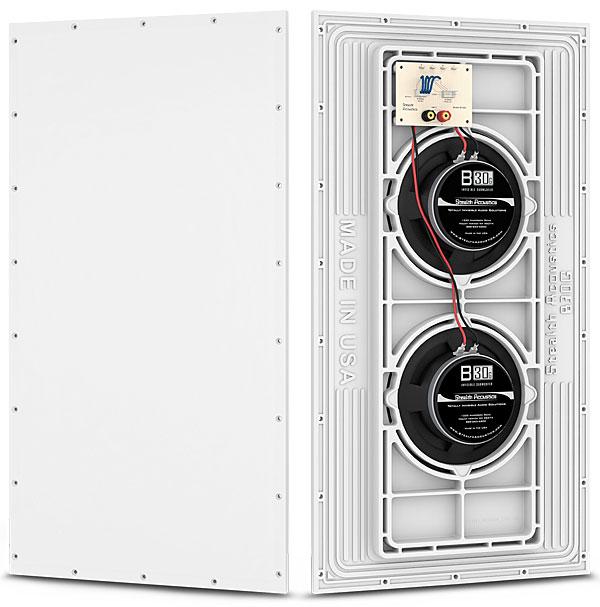
AT A GLANCE
Plus
Totally invisible installation
Can be covered with paint, wallpaper, or select specialized wall treatments
Good value
250-watt amplifier with low-pass filter
Outstanding build quality
Minus
More involved installation due to drywall finishing
Soft bass compared with traditional subs
THE VERDICT
Not the first choice for sheer sonic impact, but if aesthetics absolutely demand that no subwoofer or grille be visible, the B30G will get the job done.
Stealth Acoustics’ B30G subwoofer system is unlike nearly any other you’ll ever hold in your hands—or install in your walls. While “invisible” speakers are not a new thing, they’re still uncommon or, for most people, totally unheard of. A speaker that’s an integral part of your wall, one that can be painted, covered with wallpaper, or even done up with special wall treatments is such a seductive idea that it’s a wonder it’s not wildly popular as an architectural speaker design. Of course, there are still the constraints of studs, windows, doors, and picture frames to work around; but an invisible speaker eliminates the one visible drawback of the standard architectural speaker: the grille. Although many manufacturers have gone to great lengths to minimize the visual impact of the grilles on architectural speakers, including engineering flangeless and flush-mount designs, few have taken the totally invisible path. Why? Because most completely invisible designs have limited and uneven frequency response, wimpy dynamic range, and high levels of distortion (i.e., they sound like some idiot decided to try to turn your wall into a loudspeaker).
Stealth Acoustics is a groundbreaker (wallbreaker?) when it comes to invisible speakers. As a matter of fact, invisible architectural (and recently, flat-panel on-wall) speakers are the only kind the company makes, including both full-range and subwoofer models. The B30G, along with the recommended 255R 250-watt mono amp/crossover, is Stealth Acoustics’ largest invisible architectural subwoofer system and can be installed in the wall or ceiling. It consists of two 15.875 x 30-inch panels that can be mounted next to each other (either side by side or stacked one above the other) or installed in separate walls. The rigid frame around each panel directly attaches to standard 16-inch on-center wall studs. That, and the fact that the mounting depth is only 2.44 inches, means the B30G panels will usually fit in any existing wall with minimal modification. Behind each panel’s half-inch-thick front face are two 8-inch, low-profile cone woofers that are coupled to the panel’s radiating surface. Stealth Acoustics says the design uses “acoustic lever” principles to generate bass output “by trading off excursion for surface area.” Each panel has 331 square inches of active area, and Stealth Acoustics calculates that the total diaphragm area of the two panels combined is “nearly twice that of a typical 12-inch woofer.” The trade-off, obviously, is that this relatively large radiating area has extremely limited excursion and can’t move back and forth very far compared with most conventional drive units.

Getting Plastered
The installation of the B30G panels is, in some respects, easier than installing a subwoofer with an integral enclosure because there are no dog ears or other bracket mounts to deal with. The B30G’s frame attaches to the studs in the wall with eight screws on each side. In my case, however, various factors conspired to make installing the two panels horizontally under a large window in the master bedroom the best location, even though this wasn’t the easiest installation. With the horizontally oriented panels now 30 inches wide, I had to modify the arrangement of the studs in the wall beneath the window. Because I was worried about both the structural integrity of the window frame and the potential for resonance from the window itself, I probably overengineered the new stud configuration. The result was a longer-than-usual installation time but an incredibly rigid wall.
The next part of the install clearly differentiated the Stealth Acoustics B30G from a normal architectural subwoofer. When installed correctly, the panel’s perimeter edge should be flush with the adjoining wallboard, leaving the actual surface of the panel extending a mere 0.07 inches into the room. Since my walls were not perfect to begin with, I had to use a few of the included shims to properly align the edges of the panels. Then, as instructed, I used tape and joint compound to “blend the panel into the wall.” Ideally, it takes about 6 inches or so on every side of the panel to gradually feather the joint compound down to nothing and keep the 0.07-inch rise in the wall unnoticeable. After I sanded the joint compound, I repainted the affected area—including painting directly over the face of each panel. Not having loads of experience finishing walls, the first B30G panel I installed had a slightly noticeable rise on the left side. The second panel, however, did magically disappear.
Invisible but Not Invincible
Looking at the B30G panels before installing them, I wasn’t sure exactly what to expect performance-wise. In the end, I was both highly impressed and mildly underwhelmed. The good parts are that the woofer panels were virtually invisible (you could really only tell they were there if you were close to the wall and knew where to look), and the system was capable of putting out reasonable amounts of in-room bass down into the low 30-hertz range. (Installing them in the corner of the room as recommended rather than under a window probably would have increased the output.) I was also relieved to find that the only major issue with wall resonance was a rattle in the window trim that I easily fixed with a properly placed nail. The bad is that the character of the bass in my installation could best be described as soft. I was never able to get the tight, intense bass beats out of music (from Amy Winehouse, the Black Keys, Marina and the Diamonds, and others) that I would have heard from an in-room sub in the same price range. In other words, what I heard was good—definitely acceptable and enjoyable—but not great.
On the other hand, the Stealth Acoustics B30G subs are flippin’ invisible; and, at $1,150 for the system, it’s a great value, too. From a sheer sound standpoint, would I choose it for my sub? No. But I can tell you this: There’s no convenient space in my master bedroom for an in-room sub, and the Stealth Acoustics B30G solved the problem masterfully. Yes, there was a trade-off of ultimate performance for stealth, but if you need bass without the space, this is a compromise I’d highly recommend.
